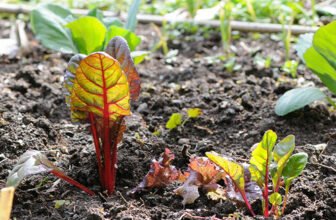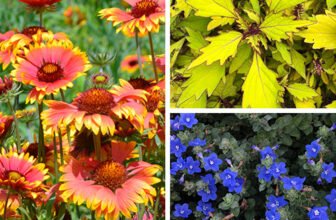
[ad_1]
In Strategies for Optimizing a Small Garden Space, Susan Morrison writes, “When I began designing gardens more than 20 years ago, I was surprised to find that smaller spaces were often more challenging to plan than larger ones. In those early years, clients with tiny lots would come to me with extensive lists of their must-have items, and I would struggle to fit everything in. It was a huge breakthrough when I finally realized that identifying the specific features and details to include in a garden should be the final step in the process, not the first.
“Since then, every consultation I have with a new client begins with three questions that I’ve nicknamed “the three W’s.” These prompts help my clients to envision themselves interacting with their redesigned spaces, and while they are useful in reimagining gardens of all sizes, they are particularly helpful when space is precious. When my husband and I recently moved into a new home with a small backyard, we had the opportunity to use the process for ourselves.”
See the plant IDs below to learn the names of some plants that give Susan’s home garden its distinctive style.
Photo 1: A spot to relax in the heart of the garden
- Rozanne hardy geranium (Geranium ‘Gerwat’, Zones 3–10)
- ‘Terracotta’ yarrow (Achillea ‘Terracotta’, Zones 3–9)
- Ultra Violet™ dwarf butterfly bush (Buddleia ‘PDSI-1’, Zones 5–9)
- ‘Meyer Improved’ lemon (Citrus × limon ‘Meyer Improved’, Zones 9–11)
- Flamingo Glow Mexican lily (Beschorneria ‘Besys’, Zones 7b–11)
- Common lippia (Lippia repens, Zones 8–11)
- ‘Dropmore’ catmint (Nepeta × faassenii ‘Dropmore’, Zones 4–8)
- Delta Fuchsia™ crapemyrtle (Lagerstroemia indica ‘Delef’, Zones 7–10)
- ‘Tequila Sunrise’ kangaroo paw (Anigozanthos ‘Tequila Sunrise’, Zones 9–11)
- ‘Fairy Tails’ fountain grass (Pennisetum ‘Fairy Tails’, Zones 8–10)
- Angel Wings® senecio (Senecio candicans ‘Senaw’, Zones 8–11)
- ‘Everetts Choice’ California fuchsia (Epilobium canum ‘Everetts Choice’, Zones 8–11)
Photo 2: Long-lasting summer color
- Tropicanna® canna (Canna indica ‘Phasion’, Zones 7–11)
- ‘Fairy Tails’ fountain grass (Pennisetum ‘Fairy Tails’, Zones 8–10)
- ‘Dropmore’ catmint (Nepeta × faassenii ‘Dropmore’, Zones 4–8)
- ‘Totally Tangerine’ geum (Geum chiloense ‘Totally Tangerine’, Zones 4–7)
- Miss Lemon™ abelia (Abelia ‘Hopleys’, Zones 6–9)
- ‘Pink Dawn’ chitalpa (x Chitalpa tashkenentsis ‘Pink Dawn’, Zones 6–9)
- Golden Spirit smoke tree (Cotinus coggygria ‘Ancot’, Zones 5–8)
- Platinum Beauty® lomandra (Lomandra longifolia ‘Roma 13’, Zones 8–10)
- Mandala® Red kalanchoe (Kalanchoe blossfeldiana ‘KLEKB20038’, Zones 10–12)
- Whale’s tongue agave (Agave ovatifolia cv., Zones 7b–10)
Photo 3: A spot with midday shade
- Miss Lemon™ abelia (Abelia ‘Hopleys’, Zones 6–9)
- Purple hopseed bush (Dodonaea viscosa ‘Purpurea’, Zones 8–11)
- Dwarf myrtle (Myrtus communis ‘Compacta’, Zones 9–11)
- ‘Fairy Tails’ fountain grass (Pennisetum ‘Fairy Tails’, Zones 8–10)
- ‘Papaya Popsicle’ kniphofia (Kniphofia ‘Papaya Popsicle’, Zones 6–9)
- ‘Sunshine’ ligustrum (Ligustrum sinense* ‘Sunshine’, Zones 7–10)
- Star jasmine (Trachelospermum jasminoides, Zones 7–10)
- Platinum Beauty® lomandra (Lomandra longifolia ‘Roma 13’, Zones 8–10)
- ‘Limelight’ catmint (Nepeta × faassenii ‘Limelight’, Zones 5–9)
- ‘Orange Rocket’ Japanese barberry (Berberis thunbergii* ‘Orange Rocket’, Zones 4–9)
Photo 4: Bold color draws you in
- ‘Dropmore’ Catmint (Nepeta × faassenii ‘Dropmore’, Zones 4–8)
- Agave (Agave cv., Zones 8–10)
- ‘Tequila Sunrise’ kangaroo paw (Anigozanthos ‘Tequila Sunrise’, Zones 9–11)
- ‘Fairy Tails’ fountain grass (Pennisetum ‘Fairy Tails’, Zones 8–10)
- ‘Sunshine’ ligustrum (Ligustrum sinense* ‘Sunshine’, Zones 7–10)
- Dwarf myrtle (Myrtus communis ‘Compacta’, Zones 9–11)
- ‘Kent Beauty’ ornamental oregano (Origanum rotundifolium ‘Kent Beauty’, Zones 6–8)
* These plants are considered invasive in some areas. Please check invasiveplantatlas.org or your state’s list of invasive plants for more information.
Photos: Carol Collins
[ad_2]










